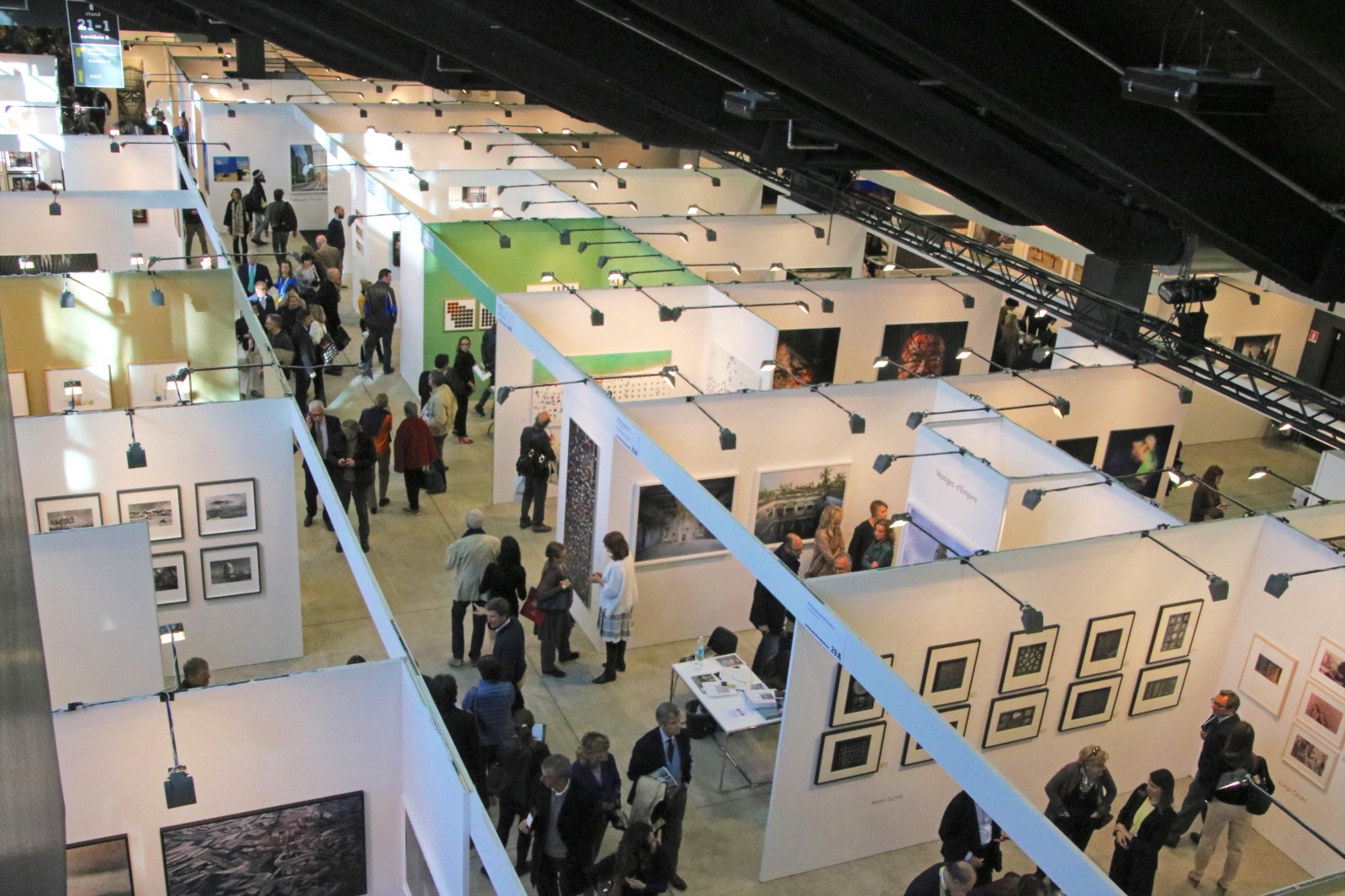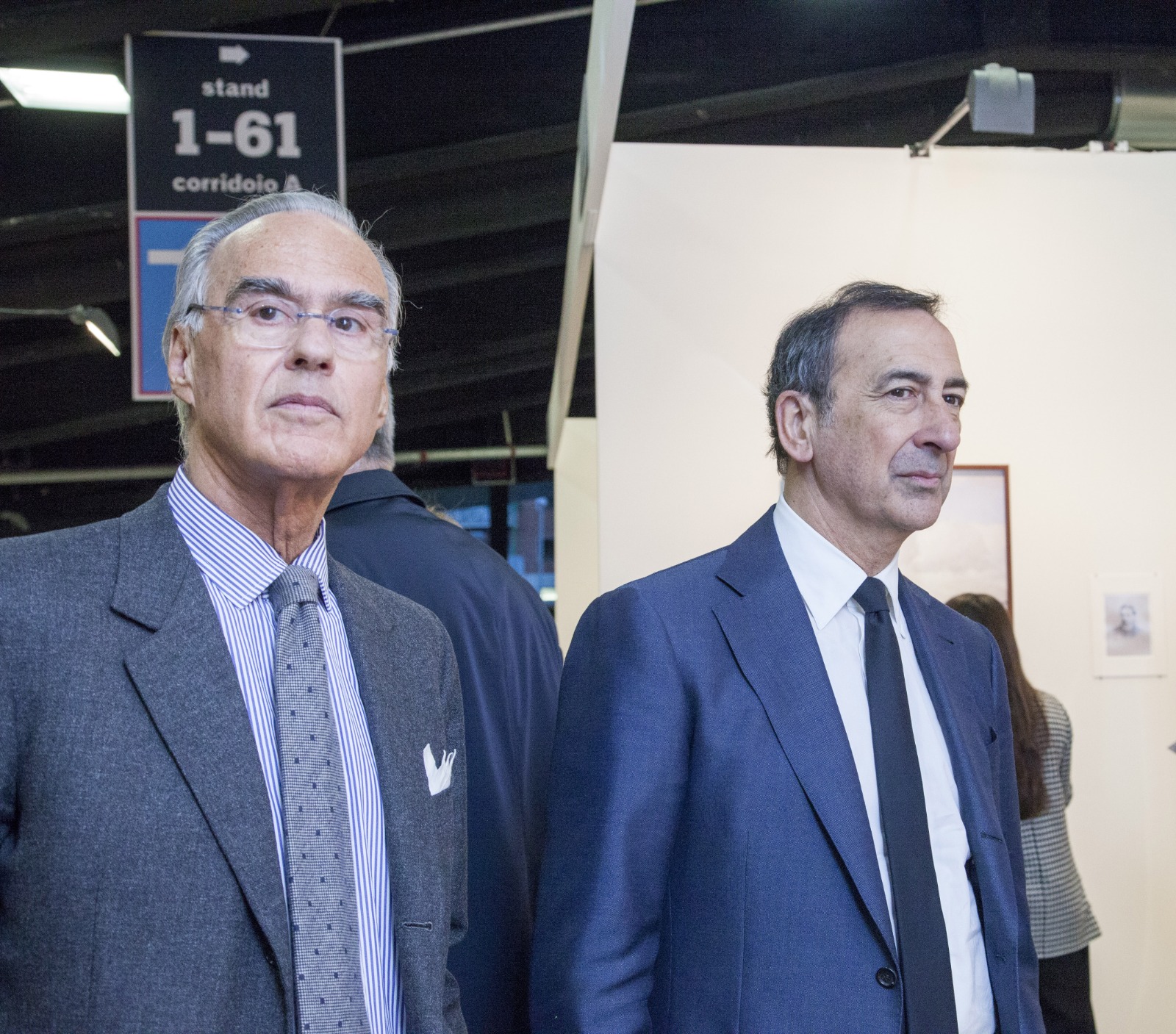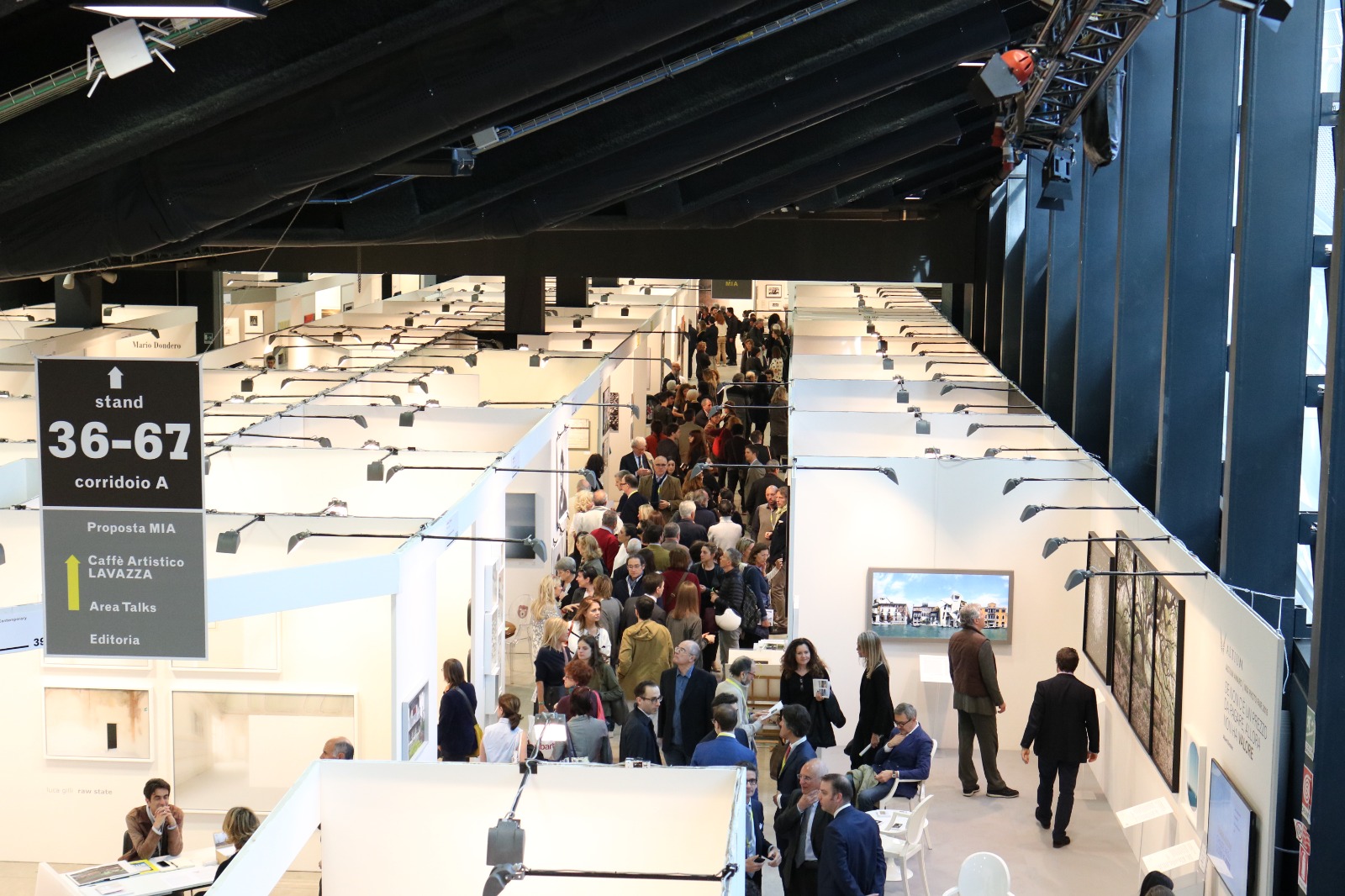Putting together passions an competences, Fabio and Lorenza Castelli, formidable father-and-daughter couple, gave birth to MIA (Milano Image Fair), the most important photography and auteur visual, ten years ago at Superstudio in via Tortona. A steel entrepreneur and passionate collector him, graduated in Economics at Bocconi but grew up with art in all its forms her, after ten years and an indisputable success, in the moment of the restart they find themselves at home in the new Superstudio Maxi, where on July 14th the press conference of the next MIA takes place and where the next edition of the Fair will take place...
Putting together passions an competences, Fabio and Lorenza Castelli, formidable father-and-daughter couple, gave birth to MIA (Milano Image Fair), the most important photography and auteur visual, ten years ago at Superstudio in via Tortona. A steel entrepreneur and passionate collector him, graduated in Economics at Bocconi but grew up with art in all its forms her, after ten years and an indisputable success, in the moment of the restart they find themselves at home in the new Superstudio Maxi, where on July 14th the press conference of the next MIA takes place and where the next edition of the Fair will take place. Gisella Borioli witnessed the birth and growth of this idea years ago. Today she interviews Fabio to retrace together a beautiful and unique story.
Ten years have passed since the first MIA, the first great Fair of the author photography in Milan. As a steel industrialist and passionate art collector, how have you thought of become the creator of such a special photo exhibition?
The idea was born once my entrepreneurial activity as President of CASTEK, name of the holding that I shared with my brothers, ended. From that moment on, I decided to start my second life in the spirit of art, which had offered me so much energy and pleasure when, in the role of collector, I collected works by authors that used different expressive languages. After a long journey that allowed me to get closer to multiple artistic forms, each connected to the other for connections that my life and my sensitivity indicated me, I focused on photography, that I considered not only the most contemporary means of expression, but also the most interesting one as it covers many areas, from reportage to contemporary art. After several experiences, I decided to create a Fair that was missing in our country. In my opinion it was the right time for photography to stop having an ancillary position towards other artistic languages. The aim of the fair was to offer the public further elements to become aware of this evolution. For this purpose, cultural events organized ad hoc were born, and the choice of exhibitors who were able to contribute to the growth of the culture of photography in the broad sense.
Was already there the ambition, perhaps, to achieve the international success of Paris Photo?
No, I have never had the purpose of creating a fair in the image and likeness of Paris Photo. Achieving an international success, instead, was my goal. Partially we have already reached it as demonstrated by the many exhibitors from all over the world, but I would like to consolidate this position by bringing MIA abroad as we already did when we realized an edition in Singapore.
Photography seems an "easy" art form, understandable, that everyone can reach, compared to the hermeticism of some contemporary art. What makes the difference between an artistic photo and an attempt to be?
This idea of the ease of photography is effectively the great misunderstanding that accompanies photography since its birth: the fact that photography - at least the field of documentation photography - reproduces in a realistic visual form a portion of the world would suggest that the user immediately captures, in addition to the sense, the expressive value. Things are actually different because in any case the photographic representation reflects the parameters of the visual canons that are part of our culture. What seems easily readable because of its immediacy of responsiveness to reality is instead very complex to a more conscious and profound reading, precisely because this presupposes a critical culture that in mass photography unfortunately, especially in Italy, is missing and that we are slowly and laboriously trying to recover. If contemporary art in its current manifestations can avail itself of infinite expressive channels - some, as you say, difficult to decipher - photography can only avail itself of the infinite variations of a two-dimensional representation. It is clear at this point that the difference between a so-called art photograph and an ordinary one is defined by the author’s ability to use a conscious and not occasional language. The task of critics is to know how to identify these authors and their languages.
Analogue, digital, post-production photography and various technologies: how much does the techniques used influence the value of a photographic work? And how to defend against reproductions not authorized?
Frankly, I think that the discussions on analogue, digital photography and any other operational-technological distinction are idle: what matters is the final result and photography, during the long and consolidated history, has used every technological innovation not to give greater value to the photographic work, but as a different operating tool, because innovations are part of any means of expression. The same manipulations that today are realized with digital procedures of post-production have always been carried out, only with other systems, almost always manual. Different instead is the discourse on how to defend against unauthorized reproductions: here there are delicate and complex talks on copyright, but I believe that this problem is inherent in all forms of artistic expression, just think of the chronicle that constantly reports widespread cases of forgeries and counterfeits.
MIA is not just a fair: it is a cultural event filled with opportunities to find and enhance new talents with dedicated exhibitions, awards and other initiatives. Of which "discoveries" over the years are you prouder of?
Among the things I’m most proud of is having contributed to the growth of the public’s ability to recognize the quality of the photographic image by focusing its attention more on content than on techniques. In the early years it was asked with which machines and which films were made the exposed photos, today it is asked "why" of those images. Without taking anything away from the importance of "how" the works are made and printed. To confirm this statement I remember the initiative I gave life to a few years ago to bring out the professionalism of all those who collaborate with artists to make prints interpreting the author’s wishes. It was called "four-handed project" that wanted to recall that partnership between the author and the printer, a link established some centuries ago when often, in the engraved plate, the two signatures were affixed: that of who had conceived the subject, with the Latin verb "invenit" and that of the plate printer with the verb "excudit".
MIA of 2011 opened a road and welcomed authors, galleries, collectors and various audience, all enthusiastic about this initiative that filled a void. In 2021, at the mark of ten years from now, what do we expect?
What we have to expect in the next 10 years, I gladly turn this question to my daughter Lorenza who directs with me MIA. For the near future we will continue to foster the photographic culture with the aim of increasing education on this contemporary art medium. Already this year we have widened the spectrum of investigation of MIA Fair, offering to our visitors and followers new perspectives on photography as a language of contemporary art. The new sections MIDA - Milan Image Design Art and Beyond Photography - Dialogue, curated by Domenico de Chirico, follow this direction and move on the borderlines of different artistic codes involving different media, but intersecting and responding to the same interest of our collectors and in this sense we intend to continue to push ourselves towards new frontiers among the media of contemporary art. A further front of development will be the international one, we would be interested in creating collaborations with foreign partners in order to create other events dedicated to photography in foreign countries, offering new platforms of visibility for Italian and international galleries. We have also invested in a new platform on the event's website, pursuing a strategy of “phygital” development, which means accompanying the physical presence of the exhibitor with a new digital presence that will allow the works set up in different architectural environments to be viewed online, with the aim of expanding the commercial reach of MIA Fair. This new online section, which will open in preview approximately a month before the opening of the event, will also give the possibility to interact digitally with potential buyers through the chat made available by the platform. This new section of the site will be visible as a preview. The intention for the near future is to continue to invest in new technologies with the aim of making MIA Fair an event that is always in step with the times.
How much has the message and the deepening brought by MIA on the knowledge of photography as an art form, no longer minor but certainly more accessible, influenced?
I believe that the effort we have made to acclaim photography, even as an art form, is unquestionable despite there are authors, even of great fame, who still today offend (or pretend to be), if they are called artists. Let’s be clear, the controversy is more than justified given the difficulty of understanding what photography is, nowadays, since it is no longer only the original "drawing with light" but has become a very complex image and full of meanings and languages. It is enough to know better how to distinguish and strive to understand the evolutionary process emphasizing its changes and wanting to do it without embarking on sterile polemics. Certainly, the greater affordability of research photography makes it more democratic, even if there are many examples, both for historical and contemporary photography, of quotations that can reach even a few million euros.
What are the highlights of the next edition that we really cannot miss?
In the next edition we will further expand the disciplinary fields of MIA Fair focusing on the research and transversality of contemporary artistic languages. In this context I must point out the two new sections. The first is called MIDA - Milan Image Design Art, dedicated to projects that create a dialogue between photography and design, the second called DIALOGUE, curated by Domenico de Chirico, whose exhibition project looks like a dialogue between photography and a single work of art made with other media such as sculpture, installation, painting and video. Another theme to devote time and attention to is that related to cultural events for which I invite you to scroll through the program.
MIA’s debut was in 2011 at Superstudio Più, ten years later - and the interval exhibition at The Mall - is the first event that inaugurates the brand new Superstudio Maxi. What’s your connection to Superstudio?
I am really happy to go back to the origins! And thrilled to find Superstudio Maxi, and to have the honor to inaugurate it. Magnificent renovation where that brilliant intuition stands to create at the entrance a huge white marble fifth. Congratulations to the creator! I am tied to Superstudio because right from the start a relationship of concrete collaboration was created, where the operating methods followed rules and shared approaches and where passion coexisted with professionalism and fairness.
A curiosity: are you a good photographer? Camera or smartphone?
I am not a photographer at all. I know photography too well to be aware that I do not have that talent to create it as I would like.



